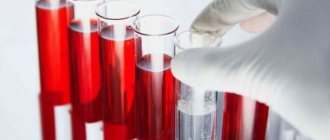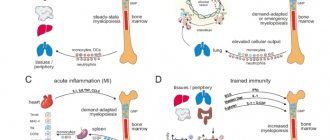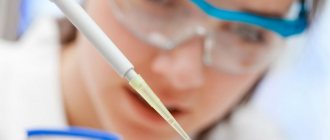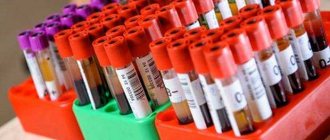Most screening methods involve various blood tests. They are intended for mass examination of people in order to identify dangerous diseases. The technique for performing them (analysis from a vein or finger) and the price of the reagents are so simple and affordable that every state medical institution examines its patients for free. But recently, conflicting data have emerged regarding the blood test for RW. According to them, this research is not always as informative as previously thought.
Types of research
When diagnosing syphilis, various methods and human biological materials are used. At an early stage, the disease is detected using a special bacterioscopic test. The blood is examined under a microscope, which helps to identify the pathogen and its strains. After this, serological tests are used, with which it is possible to detect the presence of antigens and antibodies in the blood.
In medical practice, there are 2 types of definition of sexually transmitted infections. These include:
- direct type of diagnosis - identifies pathogenic microorganisms. Here, the method of plasma chain reaction (PCR), dark-field microscopy, and RIT analysis (infection of rabbits with infected biological material) is used;
- indirect type - a serological test that detects antibodies to pathogens. These antibodies are produced by the human immune defense to suppress syphilis.
Each technique has different information content. In most cases, serological testing for syphilis is used to make a diagnosis. If additional information is needed, the doctor selects other tests for the patient on an individual basis.
Important! The type of diagnosis is determined by the attending physician depending on the person’s symptoms and the expected time of infection.
Complexes with this research
Male infertility.
Extended examination Analysis of the state of male reproductive health 29,030 ₽ Composition Women's check-up No. 1 38 studies for an annual preventive examination 19,290 ₽ Composition
Male check-up No. 1 39 studies for annual preventive examination 18,570 ₽ Composition
IN OTHER COMPLEXES
- Eight infections. Complex for men 5,310 ₽
- Future dad 8,460 ₽
- Hospital complex 2,100 ₽
- Preparation for partner childbirth for a man RUB 3,680
- Preparation for IVF for a man 6,060 RUR
Biological material for research
To detect the causative agent of syphilis in the body, which is caused by treponema pallidum, which has the shape of a spiral, the following types of biological material are used in laboratory research:
- venous and capillary blood;
- cerebrospinal fluid (secret taken from the spinal canal);
- samples from lymph nodes;
- scraping of ulcerations.
Blood is examined using several techniques
Where is blood taken for syphilis? To make a diagnosis, the patient must donate not only blood from a vein, but also from a finger. This helps to more accurately examine the biomaterial. What samples will be taken from the patient is determined by the doctor, which depends on the severity of the person’s condition, the diagnostic method and the equipment that the medical center has.
Indications for blood tests
Many patients are embarrassed to discuss the specifics of their sex life with a gynecologist or urologist. This attitude towards one’s health is fundamentally wrong, because only timely diagnosis and rapid treatment will help cope with many diseases in the early stages without complications. But even if you are sure that there has been no recent sexual intercourse, a person should not refuse the examination. The reason for this is the possibility of infection with Treponema pallidum through household or close contact. A blood test for syphilis can be carried out even among patients who do not show symptoms of the disease.
When should I get tested? Testing is mandatory in the following cases:
- when registering during pregnancy;
- when donating blood;
- while passing a medical examination when applying for certain positions that require close interaction with people and food;
- as preventive examinations during stay in places of deprivation of liberty;
- when ulcers and pimples appear in the genital area;
- re-examination in case of initial positive analysis.
After diagnosis of syphilis, blood monitoring is carried out regularly to assess the effectiveness of the prescribed treatment.
What categories of people and professions are subject to examination for RW
Identifying infected individuals helps prevent transmission and spread of infection. Therefore, groups of people and professions have been identified that must be examined for preventive purposes:
- workers of food enterprises, food factories, retail outlets;
- medical personnel of clinics and hospitals;
- drug addicts and dependent people;
- blood, sperm, tissue donors;
- contact with the detected patient;
- patients visiting a medical facility for the first time;
- patients before hospitalization and surgery;
- people with fever for more than a month and other unclear symptoms.
In addition to the mandatory contingents, there are other indications for examination:
- analysis is taken from pregnant women in consultation;
- with a symptom such as bone pain;
- after casual sexual contact;
- when identifying clinical signs such as genital ulcers, heavy discharge, skin rashes, enlarged lymph nodes.
Direct types of diagnostics
The most accurate method for diagnosing syphilis is to detect the causative agents of the disease under a microscope. This method can accurately detect antibodies in 8 out of 10 infected people. But even if no antigens were detected in the other two patients, this does not mean that they are not infected. Most likely, little time has passed since the pale spirochete entered the body and immune cells have not had time to develop.
A blood test can identify the causative agent of syphilis.
This study is prescribed to patients at both the primary and secondary stages of the disease, when rashes and ulcerations characteristic of syphilis appear on the human body and mucous membranes. By examining the fluid secreted from foci of infection, it is possible to accurately diagnose a sexually transmitted disease.
The study is carried out using a complex test, during which an immunofluorescence reaction or RIF reaction is used. To perform such a test, the patient's biological material is pre-treated with fluorescent antibodies. These compounds stick to pathogenic microorganisms and glow. When examining samples, the laboratory technician may see glowing pathogens.
This technique is indicated for the early detection of syphilis. With further development of the disease, the sensitivity of this study decreases significantly. The test will also be ineffective after treating rashes and ulcers with antibacterial drugs. In such cases, it may give a false negative result.
An accurate but very expensive method for determining the disease is the polymerase chain reaction for syphilis. This technique helps identify the disease at various stages. But its big disadvantage is its high cost, so not everyone can afford to donate blood to determine pathogens using this method.
Another type of diagnostics is RIT analysis. Its main drawback is that the result has to wait a long time until the rabbit under study shows signs of infection.
Important! Despite the fact that the test is highly accurate, it is used quite rarely in modern medical practice.
Non-treponemal methods
These tests make it possible to accurately detect in the blood and other biomaterials of a patient antibodies produced when an infectious pathogen enters the body.
The Wasserman reaction is the most common diagnostic method
Wasserman reaction
The Wasserman reaction test or RV is considered the most common and well-known method for determining syphilis. This uses the process of complement fixation (CFP). Today there are a lot of new techniques, but most of them are based specifically on the Wasserman reaction.
After treponema enters the body, the immune system synthesizes special antibodies or, as they are also called, markers. This happens due to the invasion of pathogenic microorganisms. RV indicates the presence of such antibodies, which indicates infection of the patient.
During diagnosis, the laboratory technician uses the concept of hemolysis reaction. In this case, the interaction of two substances is noted. These include sheep erythrocytes and hemolytic serum. The serum is obtained by immunizing a rabbit with sheep's red blood cells. The activity of this biological fluid is reduced by heating.
The results of the Wasserman reaction depend on whether hemolysis has occurred. In biological material where there are no antibodies, hemolysis proceeds normally, and no reaction to markers is observed. If markers are present, red blood cells interact with them and hemolysis does not occur.
To conduct such a study, all components are placed in a Petri dish in equal parts. After this, the serum, complement and antigen are heated. Sheep serum and red blood cells are added to the sample. The tube is kept at a temperature of about 37 degrees until hemolysis occurs in a control sample containing saline instead of the antigen.
To perform the Wasserman reaction, prepared antibodies are taken. Usually their packaging contains information about the technique for diluting them. A positive result is indicated as a plus. The finished analysis can record different numbers of these designations:
- “+” is a dubious result. One plus is given if hemolysis occurred with a slight delay;
- “++” – weakly expressed. In this case, hemolysis occurs with a partial slowdown;
- “+++” – positive analysis. This number of pluses is given with a significant delay in the hemolysis reaction;
- “++++” – highly positive. Here hemolysis is greatly delayed.
A positive test indicates a sexually transmitted disease
If the test is negative, hemolysis is completely absent. As an exception, there are cases of a false positive response. This occurs in patients in whom the phospholipid cardiolipin is part of the cells, and the body’s immune system does not produce antibodies to “its” cardiolipin.
Rarely are there exceptional cases when the test gives a positive reaction in absolutely healthy people. This may be due to severe pathologies, pregnancy or a weakened immune system.
Toluidine red test and plasma reagin method
The plasma reagin method or RPR refers to similar methods with the Wasserman reaction. Its use is indicated in the following cases:
- conducting examinations of persons whose symptoms do not appear or are mild;
- during the prevention of syphilis;
- to check donated blood.
The toluidine red test is effective for monitoring the course of prescribed therapy. When the disease recedes, its indicators decrease; with a relapse, the opposite picture is observed.
RMP and RSK
The Wasserman reaction is performed quite rarely during diagnosis. It is successfully replaced by the RSK method. With its help, it is possible to detect syphilis 60 days after pathogens enter the body. If the disease has a secondary form, the test gives a positive answer in almost all cases of infection.
The microprecipitation method or RMP also has an effect similar to the Wasserman reaction. This type of diagnosis is carried out quickly. Here, blood donation is carried out using a finger. In case of infection, the method will show a positive reaction a month after infection.
When analyzing MCI, blood is taken from a finger
RIM sometimes produces false positive results. This can occur against the background of such pathologies:
- pneumonia;
- toxic or food poisoning;
- stroke, heart attack;
- tuberculosis;
- brucellosis;
- oncological diseases;
- diabetes;
- haemorrhoids;
- rheumatoid arthritis;
- mononucleosis and others.
If the results are questionable, the patient is usually prescribed treponemal tests, which help clarify the clinical picture.
Price
You can donate blood for RW in private clinics or district hospitals. When undergoing a medical examination under the compulsory medical insurance policy, the patient has the right to a free analysis during the initial examination. In private clinics in Moscow prices will be:
| Service name | Price range, rubles |
| Fasting blood collection or repeated donation | 199-300 |
| Flocculation test | 370-500 |
| Test for the presence of antibodies to spirochete pallidum | 400-500 |
| PCR test | 500-800 |
Treponemal tests
These tests are considered highly effective methods for diagnosing syphilis. They are indicated in the following cases:
- obtaining a positive result with other research techniques;
- the emergence of a need to decipher erroneous results obtained from screening diagnostic methods;
- suspected infection with spirochete pallidum;
- conducting retrospective diagnostics.
Let's look at treponemal tests in more detail.
RPGA and ELISA analysis
ELISA and RPGA tests are considered the most accurate research methods. They are carried out quite quickly, but this does not affect their accuracy. With the help of these techniques, it is possible to identify the pathogen in the blood and other biological materials of the patient after a short time of pathogenic microorganisms reaching the person.
ELISA detects the causative agent of a sexually transmitted disease after 3 weeks. Sometimes it gives false results, which is often associated with systemic pathologies or metabolic disorders. Sometimes a false positive response occurs when diagnosing children born to a mother suffering from the disease.
The RPGA analysis makes it possible to detect the pale spirochete 30 days after infection, when the first rashes appear on the patient’s body and mucous membranes. This test helps identify all forms of the disease, including latent, advanced or congenital. When using RPGA with other types of tests, diagnostic reliability is guaranteed.
Important! This technique is not used to perform treatment evaluation for syphilis because the positive test persists for a long time.
RIT and RIF analyzes
Even after treatment for syphilis, treponemal research techniques provide positive results in many patients over a period of time. Because of this, it is impossible to assess the effectiveness of the therapy. It is possible to obtain accurate data using RIT and RIF analyses. During diagnosis, blood taken from a vein and other biomaterials of the patient are examined. The technique is carried out using expensive equipment by qualified medical professionals.
RIT analysis is considered a very accurate diagnostic method
When using the RIF test, a positive response to syphilis can be obtained 60 days after infection. If the result is negative, it can be said with great certainty that the person is healthy.
RIT is often performed when other diagnostic techniques are positive. This technique helps to refute or confirm previously obtained data. The only drawback is that it can be used to determine the presence of a pathogen in the body only after 90 days.
Decoding the analysis results
With primary syphilis, the Wasserman reaction becomes positive at 6-8 weeks of the disease (in 90% of cases), and the following dynamics are noted:
- in the first 15-17 days after infection, the reaction in most patients is usually negative;
- at the 5-6th week of the disease, in approximately 1/4 of the patients the reaction becomes positive;
- at the 7-8th week of the disease, RW becomes positive in the majority.
In secondary syphilis, RW is always positive. Together with other serological reactions (RPGA, ELISA, RIF), it allows not only to detect the presence of the pathogen, but also to find out the approximate duration of infection.
With the development of a syphilitic infection in the 4th week of the disease, after the onset of primary syphiloma, the Wasserman reaction passes from negative to positive, remaining so both in the secondary fresh and in the secondary recurrent period of syphilis. In the latent secondary period and without treatment, RW can turn negative so that when a clinical relapse of syphilis occurs, it becomes positive again. Therefore, in the latent period of syphilis, a negative Wasserman reaction does not indicate its absence or cure, but only serves as a favorable prognostic symptom.
With active lesions of the tertiary period of syphilis, positive RW occurs in approximately 3/4 of cases of the disease. When the active manifestations of the tertiary period of syphilis disappear, it often turns negative. In this case, a negative Wasserman reaction in patients does not indicate that they do not have a syphilitic infection.
In early congenital syphilis, RW is positive in almost all cases and is a valuable method for verifying the disease. In late congenital syphilis, its results correspond to those obtained in the tertiary period of acquired syphilis.
The study of the Wasserman reaction in the blood of patients with syphilis undergoing treatment is of great practical importance. In some patients, despite vigorous anti-syphilitic therapy, the Wasserman reaction does not turn negative - this is the so-called seroresistant syphilis. In this case, it makes no sense to carry out endless antisyphilitic therapy, achieving the transition of positive RW to negative.
From the above it follows that a negative Wasserman reaction is not always a sign of the absence of a syphilitic infection in the body.
A positive Wasserman reaction is possible in people with a number of other diseases and conditions not related to syphilis: tuberculosis, systemic lupus erythematosus, blood diseases (leukemia), leprosy, pemphigus, leptospirosis, malignant neoplasms, typhus, scarlet fever, beriberi disease, sleeping sickness , during pregnancy, before or after childbirth, menstruation, after anesthesia, after drinking alcohol, in drug abusers, taking fatty foods, taking medications, introducing foreign serums. In such cases, other methods (RPGA, ELISA, RIF) are used to clarify the diagnosis. The nonspecific positive Wasserman reaction in malaria is very characteristic, especially during the attack period. Therefore, if RW is positive in a person without clinical manifestations of syphilis and who denies syphilitic infection, malaria should be considered.
All of the above indicates that a positive result of the Wasserman reaction is not yet unconditional evidence of the presence of a syphilitic infection.
Recovery after testing
After taking a blood test, doctors recommend a proper and balanced diet, as well as plenty of fluids. You can afford warm tea and chocolate. It will be useful to refrain from physical activity and under no circumstances drink alcohol.
Blood collection procedure
A person usually receives a referral to donate blood from a venereologist. At the request of the patient, the examination can be carried out anonymously. In this case, a referral from a doctor is not required.
To obtain the most reliable data, the patient must know how to donate blood. It is important to follow these recommendations:
- The collection of biological material is done in the morning. Before this, it is forbidden to eat, you are only allowed to drink water;
- a few days before the procedure, fatty, smoked, sour, spicy foods and alcoholic drinks should be excluded from the diet;
- blood is taken from a vein or finger;
- The patient usually receives results within 1–2 days in the laboratory or from the attending physician;
- A repeat test must be taken after 90 days.
If the result is positive, the patient is prescribed additional examination and the necessary treatment. Therapy tactics and medications are selected on an individual basis.
What to do if RW is positive
If the obtained data show ++++ or ++, a secondary blood sampling is necessary. Sometimes ORS (disease selection response) is used. To do this, blood serum is applied to a glass slide and a cardiolipid antigen is added. If the repeated result is positive, a visit to a venereologist is required to make an accurate diagnosis.
To prevent congenital syphilis in children, pregnant women donate blood for RW during all nine months: this test is one of the mandatory procedures for expectant mothers. If a pregnant woman becomes infected, comprehensive treatment is necessary during the first months. If treatment is neglected, the consequences are dangerous for both the mother and the unborn child.
Diagnostic algorithm
When making a diagnosis in patients suspected of being infected with a sexually transmitted infection, a certain algorithm of actions is used:
- from the first days of infection, when less than 2 months have passed since infection, the pathogen is searched for in the blood using fluorescent antibodies;
- in the primary or secondary form of the disease, ELISA or RMP are used. RPGA is prescribed to confirm the result;
- discharge from the rash is examined using a microscope;
- when syphilis moves to the third stage, one out of three patients has a negative RPM reaction, and the results of RPGA and ELISA are positive. But this does not always indicate a disease. Sometimes a positive response is noted due to a previous illness;
- To confirm intrauterine infection, a blood test is taken from the newborn and his mother. In a child, RPGA and ELISA may be positive. Confirmation of the diagnosis is performed by immunoblotting.
Syphilis is a severe systemic disease that negatively affects the functioning of the entire body. That is why it is so important to identify pathology in a timely manner and take all necessary measures to cure it.










